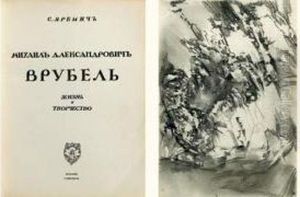Vroubel Paintings
Mikhail Vrubel, born Mikhail Aleksandrovich Vrubel on March 17, 1856, in Omsk, Russia, is often regarded as a Russian Symbolist painter who played a significant role in the Russian art scene at the turn of the 20th century. His father was a military lawyer, which allowed the young Vrubel to grow up in a cultured environment that fostered his early artistic inclinations. He studied law at St. Petersburg University but was drawn more to art and eventually enrolled at the Imperial Academy of Arts.
After graduation, Vrubel began to work under the tutelage of the renowned painter Pavel Chistyakov. His early works were influenced by the classical style, but Vrubel soon developed his own unique artistic language that was characterized by intricate detail, a rich palette, and often fantastical elements. During the 1890s, Vrubel achieved significant success with his series of works based on themes from Russian folklore and literature, particularly his illustrations for Mikhail Lermontov's narrative poem 'The Demon'. These works are marked by their dramatic intensity and expressive use of color and form.
Vrubel's style continued to evolve, and he became associated with the Symbolist movement, which sought to express the more mystical and emotional aspects of the human experience. His most famous painting, 'The Demon Seated' (1890), is a powerful expression of this Symbolist ethos. Vrubel's work was not limited to painting; he also excelled in decorative arts, creating stage designs, ceramics, and works in stained glass.
Despite his professional success, Vrubel struggled with mental health issues throughout his life, and his condition deteriorated in the early 20th century. He spent his last years in and out of psychiatric hospitals, and his health was further compromised by a progressive form of blindness. Mikhail Vrubel died on April 14, 1910, in St. Petersburg. His legacy lives on in his contributions to Russian art, especially his role in bridging the gap between traditional Russian art and the avant-garde movements that would follow.
